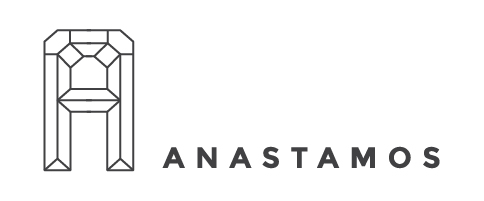Letter From The Editor: Fear And The Issue
Alison Williams
Dear Reader,
This first issue of Anastamos is alive, and with it the body of nearly a year of deep collaborative work. A year of growing from a mere seed of an idea tossed out by Dean Fuery to the graduate students of Wilkinson College, to the tentative germinations of thought, extending and branching out without certainty of destination or fruition. But that’s the exciting part in creating something new. With just this seed to grow on – an interdisciplinary journal – the editorial staff who contributed this year concocted a clear vision, plan, and execution. We knew what we wanted, and we knew we could get there. From creating a mission statement, to deciding on a name and logo, to extensive unrelenting outreach across disciplinary borders, to reading and evaluating submitted work, to engaging with peer review, to building the website, every person who touched the concept of this journal contributed to its nascent growth, and to the issue you are reading now.
The name of this journal, Anastamos, is derived from the medical term anastomosis, which is the connection of two normally divergent structures. The origin of the term anastomosis comes from the Greek word anastamoun, which means “provide with a mouth.” These two definitions are, quite literally, how we think of this journal. Interdisciplinary work not only crosses boundaries, it reconfigures them. It reimagines previously held theories and doctrines and fundamentally changes them, so that we see and experience the world in unfamiliar and vital ways. With Anastamos, we seek to provide these new modes of being and thinking with the opportunity to speak.
In exploring new territory, one will encounter a fear of the unknown. As much as we know of the world, or think we know, we are constantly confronted by the shock of how little we do know. Every moment of a life has the potential to encounter something new, which is why individually and collectively we will always grapple with fear. Fear is part of the human condition because it is so mundanely and yet so extraordinarily human – we know, even before we have children, that being a parent means constantly encountering situations that will make us uncomfortable, but it isn’t until we become a parent that we can fully know the terror of the thought of our child subjected to the whims of society, as in Chapman MFA student Christina Brubaker’s poem “My Daughter.” We think we are conscious beings, awake in the world, but any foray into the contemplation of the role of the observer in the physical universe immediately reminds us how tenuous our reality actually is, as renowned quantum physicist Dr. Menas Kafatos so deftly illuminates in his piece “The Living Presence Is The Antidote To Fear.” Essayist and novelist Pico Iyer reflects on the frightening unfamiliar places we travel – both physically and emotionally – when we seek to fulfill our life’s callings, in the world and on the page.
Academia is not immune to fear of the unknown. Often, interdisciplinarity can be seen as inhabiting an outsider space, which can be a challenge to academic identity, to a life’s calling. In the paper “Conflicts and Configurations in a Liminal Space: SoTL Scholars’ Identity Development,” the authors describe an academic tribalism fostered by disciplines. SoTL, or the Scholarship of Teaching and Learning, is a practice in which educators inquire into their own practices in order to improve teaching and learning. In this paper, SoTL scholars inquire into their own experiences in their own disciplines and their struggles with interdisciplinarity. “While academic identity can be defined as the meaning one attaches to roles and tasks required within a particular institutional context, it is often seen as disciplinary identity. The disciplines have been characterized as academic tribes marked by particular ways of thinking and acting, and a key task for educators is seen as socialising students into disciplinary norms, thus perpetuating a shared sense of disciplinary identity. This sense of identity can be threatened by tensions between disciplinary scholarship and the interdisciplinary arena (of SoTL)” (Conflicts 10). Once “accepted” into a college/discipline, students may begin to see themselves as participants solely within that area of study. This composition of knowledge allows a hierarchy, wherein the teacher has mastery, and the student is placed in an aspirational position of desiring that mastery. However, that mastery can be seen, from an interdisciplinary perspective, as an illusion. It implies mastery of a certain category of a relatively unchanging body of information – but what happens when that category of information does shift and change? Both student and educator are then put in a position of tribal instability.
An engagement with interdisciplinary studies “leads to troubled knowing. It requires us to develop the capacity to become comfortable being in a nexus of discomfort” (Conflicts 11). In moving into the territory of interdisciplinary inquiry, a scholar must pass over the threshold of their mastery in their discipline. This can generate “feelings of being once again a novice, complete with multiple identity crises and self-doubts…triggering feelings of being an impostor…This is particularly challenging for those of us who are still developing our sense of belonging in the main academic discipline” (Conflicts 13). How can we, particularly as graduate students, dare to propose a collaborative inquiry into a field outside of our own, when we haven’t even mastered the one in front of us?
Detractors of this kind of collaboration point out that cross-discipline work will always be inherently superficial. They argue that the training and education it takes to become a master of a particular discipline makes it impossible for a participant in one discipline to ever have the depth of knowledge of another completely disparate discipline. It is illogical to think that a literature scholar would be expected to engage in the same level of scientific knowledge as a biologist, even if they knew from the start of their program that they were interested in interdisciplinary work within specific fields. But the point is not that a student interested in interdisciplinary work must become an expert in a field in which they want to collaborate. Rather, it is the act of exploration and collaboration between two disciplines that creates new and unexpected synergies and ideas, which can in turn lead to powerful new work in all the engaged disciplines. The ecological digital humanities (EcoDH) is an excellent example of this. “EcoDH…developed from the mingling of the environmental humanities and the digital humanities. Both are known for being interdisciplinary and collaborative; challenging business-as-usual scholarship by imagining new forms and employing new media for academic work; emphasizing making, composing, retrofitting, and repairing over unsustainable cycles of innovation; valuing archiving and preservation while looking to forge the future; and insisting on the necessity of diversity now and in the past, whether in a space of practice, a data collection, a human community, a multispecies assemblage, or an ecosystem” (Introduction 341-342). Projects in EcoDH engage the strengths of each of its disciplines to create work that makes meaningful connections between the natural and the creative worlds which engage both the scholars in the disciplines as well as the general public to draw attention to the complex environmental issues that our global society currently faces. “Humanities scholars do not always work with the big data that make global warming undeniable to scientists, but as scholars who devote their lives to understanding and teaching difficult material and its cultural impacts, they know how to communicate the stories of change that looming catastrophe entails” (Introduction 342). In working with the sciences and scientists to identify important areas of global environmental interest, humanities scholars are able to make humanistic connections and convey those through digital media. This is a truly interdisciplinary and multi-disciplinary approach with powerful real-world potential and consequences.
Creation must welcome experimentation, and invite mistakes. We can’t know what the shining stars and the beautiful losers of exploration might be. Part of our mission at Anastamos is to embrace the inherent not-knowing of starting something new. Creating this journal has been an unintentional exploration by the editorial board into our theme of Fear. It has been intimidating to go out of our comfort zones, to cross academic tribal lines and try to engage with scholars and academics and artists who are at the top of their game, many with decades of knowledge; and to do so with just an idea and a desire for connection and commitment to scholarship. We have encountered skepticism along the way. But in embracing the fear, we reinforced our commitment to interdisciplinarity as a way for students and for education to continue to dive deep and create new lines of inquiry and knowledge exploration that are passionate, relevant, and vital, a way “that allow(s) us to come up with alternative configurations of our educational biography” (Conflicts 15.) It might get messy. It will certainly be a bit scary. But it might be more interesting that way.
In our recent roundtable at the 2017 College English Association Conference, the Anastamos editorial board discussed the idea of interdisciplinarity as a living bridge. A bridge can be solely a means of conveyance, in this sense enabling movement from one discipline to another; but it can also be a locus for community in and of itself. We conceive of Anastamos as a living bridge, a point where previously unconnected things connect, a place where new languages and ideas burst to life. We embrace troubled knowing on the highest level, and we welcome diversity, innovation, and, importantly, graduate student work!
Is this ambitious? Perhaps. But in our increasingly global culture, it is becoming harder and harder to live on an island (or surrounded by impotent walls), and this journal could not have been created without the community who collected on the bridge with us. I want to thank, first and foremost, Wilkinson Dean Patrick Fuery for coming up with this genius idea, and his team, in particular Graduate Programs Coordinator Allison DeVries, who pretty much made everything possible. Vice Provost Richard Redding and Administrative Assistant Lonnise Magallanez were instrumental in connecting us to the Chapman graduate community at large. Our faculty advisors Dr. Ian Barnard, Dr. Greg Daddis, and Professor James Blaylock were crucial in guiding us on the academic ins-and-outs of interdisciplinarity and scholarship. The Chapman Strategic Marketing and Communications Department stayed with us through the creation of the marvelous Anastamos website, and we owe the greatest thanks to David May, Tom Atwell, Drew Farrington, Mirabel Rice, Aaron Singh, Kayla Ziegler, Esther Choi, and Eduardo Contreras. Dr. Eric Chimenti and his Ideation Lab stepped in at every very last minute to help us create incredible graphic elements for Anastamos. There were a number of Chapman graduate students who contributed to the journal in important ways throughout the process, including Erika Gibson, Nikkia Pannell, Wilson Parnell, and Katie Ratermann. And to the many others who offered advice, insight, and guidance, we thank you for being a part of the genesis of this journal, and for accompanying us in this endeavor.
Now, we invite you to come join us on the bridge.
Warmly,
Alison Williams
Editor-in-Chief
Works Cited
Cohen, Jerome, and Stephanie LeMenager. “Introduction: Assembling the Ecological Digital Humanities.” PMLA The Changing Profession, 131(2), March 2016, pp. 364-372.
Simmons, Nicola, Earle Abrahamson, Jessica M. Deshler… “Conflicts and Configurations in a Liminal Space: SoTL Scholars’ Identity Development.” Teaching & Learning Inquiry: The ISSOTL Journal, Vol. 1, No. 2, Special Issue: Writing Without Borders: 2013 International Writing Collaborative / Guest Editors: MickHealey and Beth Marquis (2013), pp. 9-21. Published by: Indiana University Press on behalf of the International Society for the Scholarship of Teaching and Learning. JSTOR: http://www.jstor.org/stable/10.2979/teachlearninqu.1.2.9
Image by Stéphane Malka used with permission.


No Comments